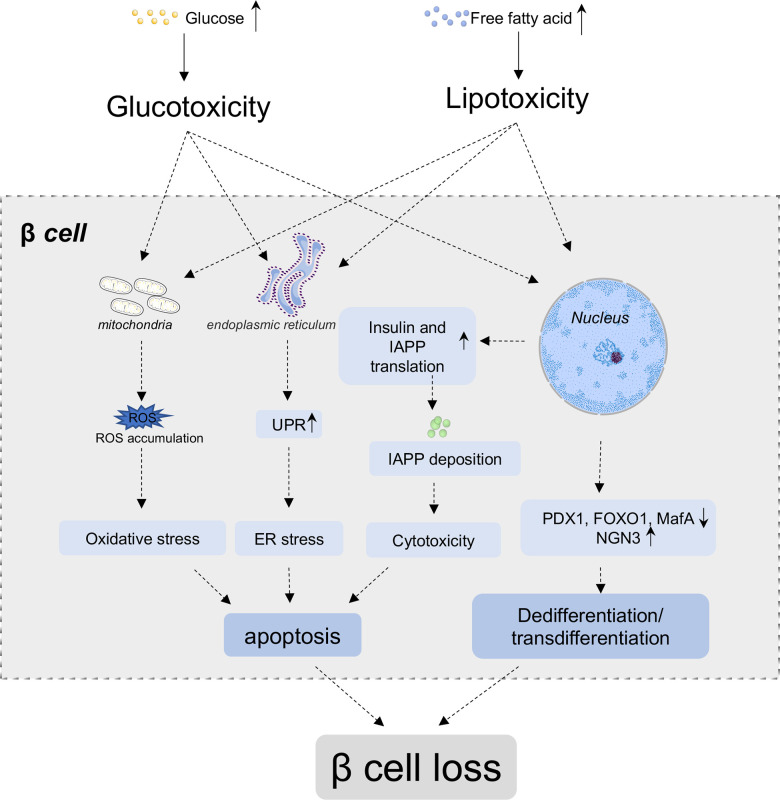Figure 1.
β cell loss in T2D. In normal conditions, glucose and nutrients influx stimulate β cells to secrete insulin to cope with increased blood glucose level. Under chronic high blood glucose and high free fatty acids condition, β cells secrete more insulin to compensate hyperglycemia, while simultaneously, co-secrete more islets amyloid polypeptide (IAPP). The deposition of IAPP further aggregate into amyloid plaque in β cells. Glucotoxicity, lipotoxicity and amyloid deposit lead to the accumulation of reactive oxygen species (ROS), unfolded protein and so on, which results in oxidative stress, ER stress, inflammation and other cytotoxicity of β cells, and ultimately induces apoptosis of β cells. Additionally, high glucose and lipid lead to the downregulation of critical transcriptional factors, such as PDX1, FoxO1 and MafA, and re-express of progenitor marker Ngn3, which lead to the dedifferentiation and/or transdifferentiation of β cells. Both the apoptosis and dedifferentiation/transdifferentiation could contribute the mass loss of β cells.

